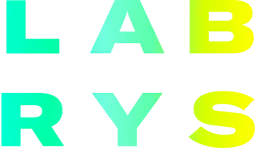Summary
- The Ethereum Cancun-Deneb upgrade incorporates EIP-4844, or Proto-Danksharding, with the objective of enhancing scalability and mitigating gas fees. This will open the door for more use cases to move on-chain.
- Sharding, a method that segments a blockchain network into smaller entities called 'shards,' constitutes a key aspect of this upgrade.
- EIP-4844 encompasses additional crucial updates beyond its focus on scalability and gas fees, thereby establishing the groundwork for forthcoming upgrades to the Ethereum network.
Intro
EIP-4844, Proto-Danksharding, is the next major upgrade to Ethereum. EIP-4844, set to roll out in the first half of 2024, introduces ‘blob-carrying transactions’ to efficiently manage large data, setting the stage for future full sharding implementation on Ethereum.
Fun fact
Where did Proto-Danksharding get its name? The name ‘proto-danksharding’ is derived from its two visionary creators, Protolambda and Dankrad Feist.
About Danksharding
Danksharding, presently the proposed design for sharding on Ethereum, employs sizable data ‘blobs’ to increase transaction throughput. Proto-Danksharding serves as an interim measure towards full Danksharding, with the aim of reducing transaction costs and boosting throughput by leveraging the blob-carrying transaction type that L2 rollup sequencers will use.
To learn more about Ethereum scaling and L2 rollups, please take a look at our previous blog post The comprehensive guide to scaling Ethereum & Rollups.
Why EIP-4844?
Essentially EIP-4844 adds a new data storage option that Layer 2 blockchains can take advantage of, to directly lower their transaction fees by around 10x. Don’t quote us on this, but if currently sending ETH in L2s is around $0.10 to $0.20 we are confident that post EIP-4844, sending ETH will cost pennies. And, as L2s blockchains post data back onto Ethereum, mainnet fees will be marginally lowered too.
Layer 2 activity is accelerating, due to the already-lower cost associated with gas fees. The higher fees on some layer 1 blockchains make it impractical for businesses with high transaction volumes to move on-chain (for example when completing non-financial transactions like gaming transactions or low-value NFT activities). High fees on layer 1 blockchains have been a barrier for many to date, playing a role in stifling the often talked-about mass adoption vision for the Web3 industry.

EIP4844 going live will effectively increase the bandwidth of ETH Layer 2’s, and will continue to improve scalability and user-centricity. By bringing down those fees but still inheriting Ethereum’s security, L2s will benefit from a whole new range of use cases that can and will move on-chain. Use cases that were previously benched by the classic ‘blockchain scaling argument’, such as buying goods with crypto, on-chain order book (CLOB) trading, gaming and more SocialFi platforms to name a few.
Anything that is transaction intensive will now be welcomed on-chain.
Additionally, the Ethereum Cancun upgrade encompasses several other noteworthy updates such as, the incorporation of execution-layer logic, verification rules, and a two-dimensional fee market — all essential components for the eventual implementation of full Danksharding down the road.
Conclusion
Through the incorporation of the majority of logic necessary for complete Danksharding, EIP-4844 plays a pivotal role in the journey towards achieving full scalability for the Ethereum network.
Our take? EIP-4844 will kick-start the next wave of on-chain onboarding for a wider range of use cases than we have previously seen. All things considered, 2024 is shaping up to be an exciting, bullish and expansive year for the Web3 industry.
Are you looking to move your business on-chain? Reach out to our team today.


